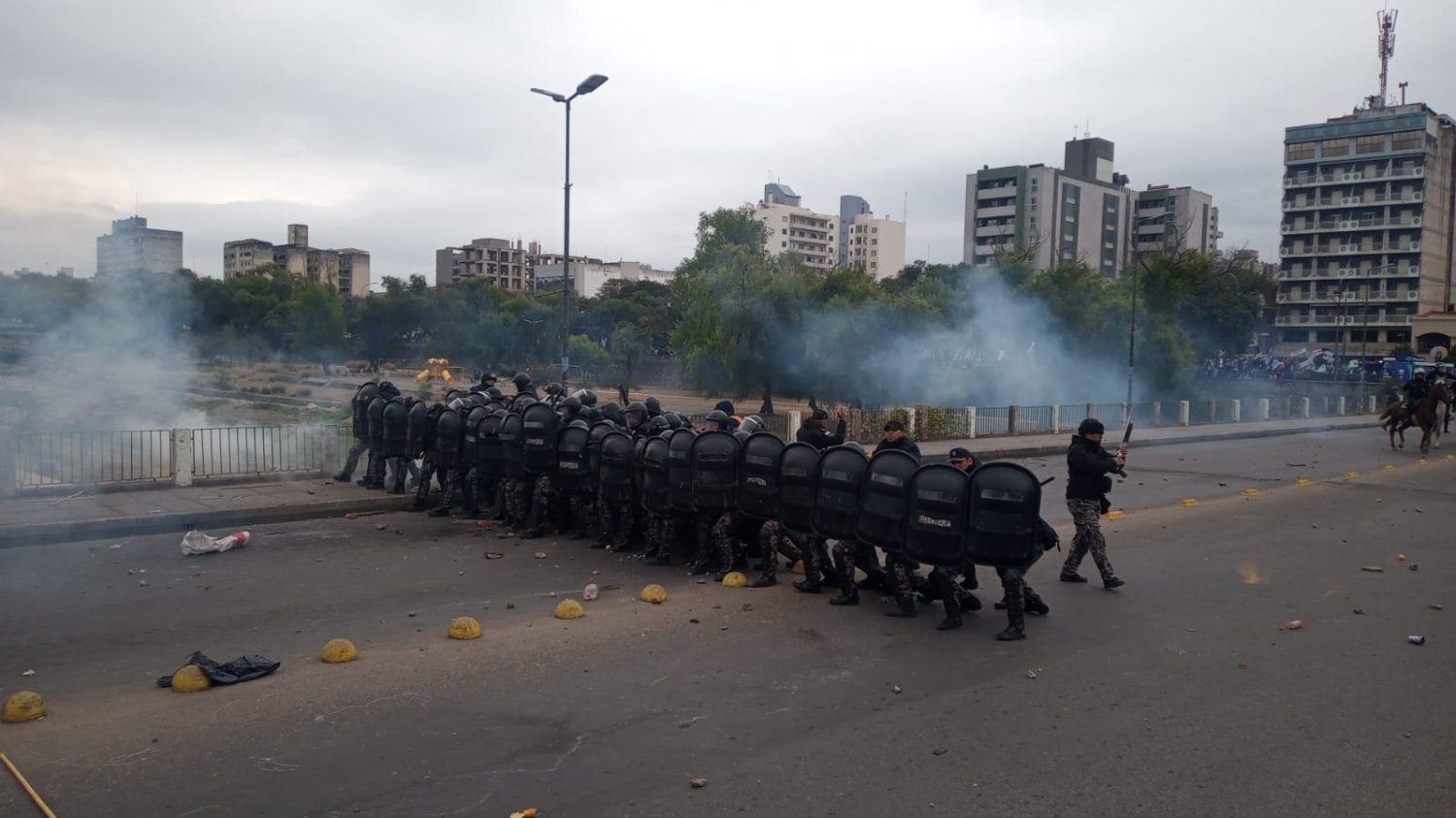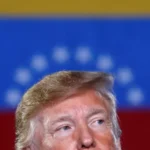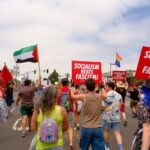
This Tuesday, invoking the most gorilla past of radicalism, Gerardo Morales launched with ferocious brutality his repressive forces against the mobilization that repudiated the Constitutional reform that the governor agreed with Peronism. The images traveled the country: demonstrators seriously woundedchase and hunting in the most humble neighborhoods, arbitrary arrests in the street, journalists attacked with rubber bullets, undercover cops in civilian clothes who, in addition, fired sling shots at those who marched.
[Imágenes exclusivas] Thus the Morales Police repressed the protesters with stones and rubber bands pic.twitter.com/006JjRmd6U
– The Daily Left (@izquierdadiario) June 20, 2023
Among the smoke from the gases and the noise of the shots, that radicalism from massacre of the workers of the heroic Patagonia Rebelde; the one who pushed and seconded the so-called Liberation Coup of 1955; the one who furiously knocked on the door of the barracks in March 1976.
At the close of this note they were still entering arrested persons to the prison located in the neighborhood of Alto Comedero, many of them detained in completely arbitrary conditions. The count had reached 68, 5 minors. In the afternoon, stopping the people, they had circulated police vans without license plate. A markedly serious complaint was also added: one of the vehicles has a patent from a company linked to the Morales government.
The repressive brutality flooded the country’s screens when Nelson Mamani he fell badly wounded, bloodied. A gas grenade exploded against his head. The solidarity of the protesters led him to the ambulance. The doctors operated on him for several hours. His condition is stable, but its evolution should be evaluated in the next 72 hours.
The bullets, the gases and the sticks hit thousands of bodies. The repression, as had occurred on Last Saturday in Purmamarcaalso fell on people who were barely watching what was happening.
While out of the Legislature the bullets cut the air, inside the enclosure Peronism dragged itself back before Viceroy Morales. Lacking even self-respect, she sat down at the radical governor’s table to swear a massively repudiated Constitutionwhich Morales himself had modified the night before, almost by decree.
A anger that emerges from the depths
If radicalism resumed its most gorilla traditions and you react, the people of Jujuy brought from memory that gigantic combativeness that was staged at the end of the 90swhen 22 routes came to be blocked by pickets simultaneously in the province.
The anger against Morales and his reform turned into resistance. The streets were disputed territory for hours, as seen nationally. But that violent fury did not come out of nowhere. If you attend to the short term, the Morales Reform created an atmosphere of growing malaise. To the open attack against the right to protest was added the arbitrary attempt to impose a reform of electoral mechanics to seize the sum of public power.
At this point we must be completely clear: in the electoral campaign Morales lied to thousands and thousands of jujeños. Only when the Convention began sessions did it announce that it would try to eliminate midterm elections and impose a mechanism that granted an automatic legislative majority to whoever won the elections.
At the same time, the reform violently offended the original communities that inhabit the deep Jujuy. Those that Morales and Peronism consider an obstacle to ensure lithium exploitation lucrative enough to large multinationals.
That anger increased as the farce of the same convention became evident. Without the active role of denouncing that the Convention members of the Left Front played, the Constituent Assembly would have been a process, agreed and sealed by Morales and the Peronist Guillermo Jenefes. That denunciation included showing that nothing was discussed there. That nobody wanted to listen: radicals and Peronists reached the point of voting prevent the word of human rights organizations.
The rising anger against the reform found unity with the teacher fight for salary. The streets were the terrain of a confluence that soon found a common enemy. Morales, responsible for the Constituent Assembly, guarantor of the miserable salaries received by Jujuy teachers.
These huge mobilizations were the first mass coup for reform. They forced Morales to retrace attempts to modify the electoral regime. He also to drop a provocative decree against social protestwhich did not last four days.
The second came from the interior of Jujuy. Of the cuts that dotted the province, finding its combative center in Purmamarca. From the harsh resistance of the native communities that sprouted in the Jujuy routes. Morales’ second failure was cemented in Purmamarca’s combativeness.
Questioned, he chose the maneuver. This Monday afternoon, he tried concessions that were not such. Leaving the essence of his reactionary reform intact, he escalated the anger. Turned into fury, he took the form of a resistance that crossed the streets of San Salvador this Tuesday.
That fury is still open. The hours to come will tell how it unfolds. However, it is essential to organize it. Betting on the development of democratic organization instances that nucleate the combativeness that is seen in each roadblock and in the fight in the streets. To unite wills to give a joint fight. In this way, it would be essential, for example, Promote a body such as a Provincial Assembly of union organizations, social movements, students and native communities.
The Crack Lies
This Tuesday, capitalist politics built its agenda based on the brutal repression in Jujuy. Looking for conspiracies where none exist, Morales and Together for Change accused Alberto Fernández and Cristina Kirchner of driving the roadblocks. The president and the vice president, in chorus with the whole of Peronism, returned the blow.
The accusations try to hide a gigantic fact: the Morales reform was confronted by the street; the people of Jujuy mobilized. Teaching, native communities, workers from multiple sectors and the community in general. Peronism was an open accomplice. CGT regional, tied to that political space, avoided by all means to call for forceful measures of struggle. Just this Tuesday, after the savage repression, she called a 48 hour strike.
In the streets, accompanying the demonstrations, was the left front. In each teacher march, in each mobilization against the reform. At every roadblock. The most obvious example of that place is the brutal repression that was unleashed on Natalia Moralesthe legislator-elect of the PTS-FITU, who was dragged 150 meters by the asphalt of the route in Purmamarca. That day he accompanied the claim of the original communities.
Both large capitalist coalitions bet to recreate the crack. They try a poor policy at a time when they can only offer variants of the same program of adjustment. The one ordered by the FMI. On this basis, they appeal to the demagogic use of the facts of Jujuyas well as the aberrant femicide committed in Chaco.
The right can only be confronted in the streets. Jujuy shows it, in a crystalline way. An active national strike of the CGT and the CTA is urgent until this reform is overthrown Definitively. New national days of struggle are necessary, with roadblocks throughout the country. The future, as we said a few days ago, will be fought in the streets. But the future is coming.
Source: www.laizquierdadiario.com

